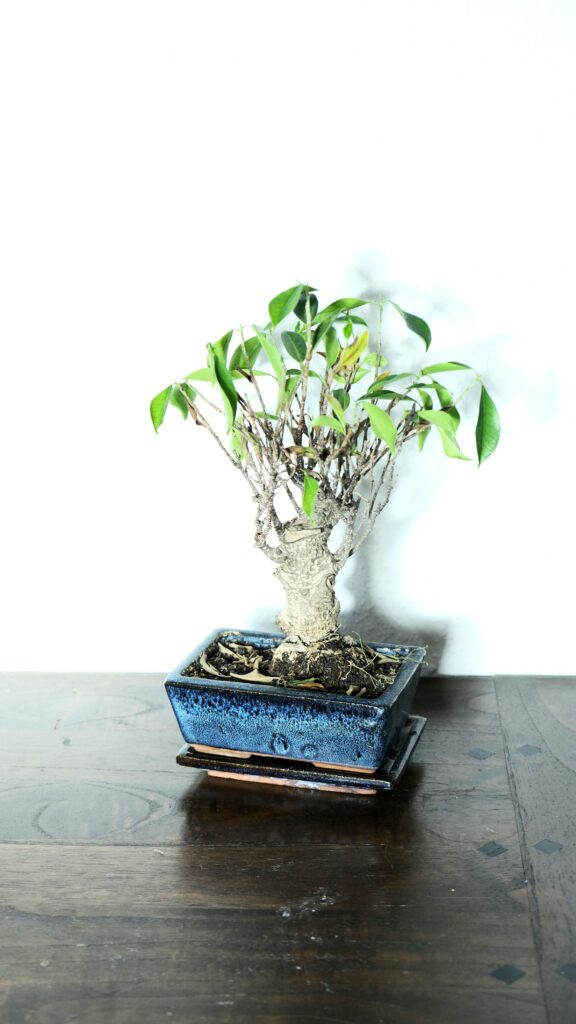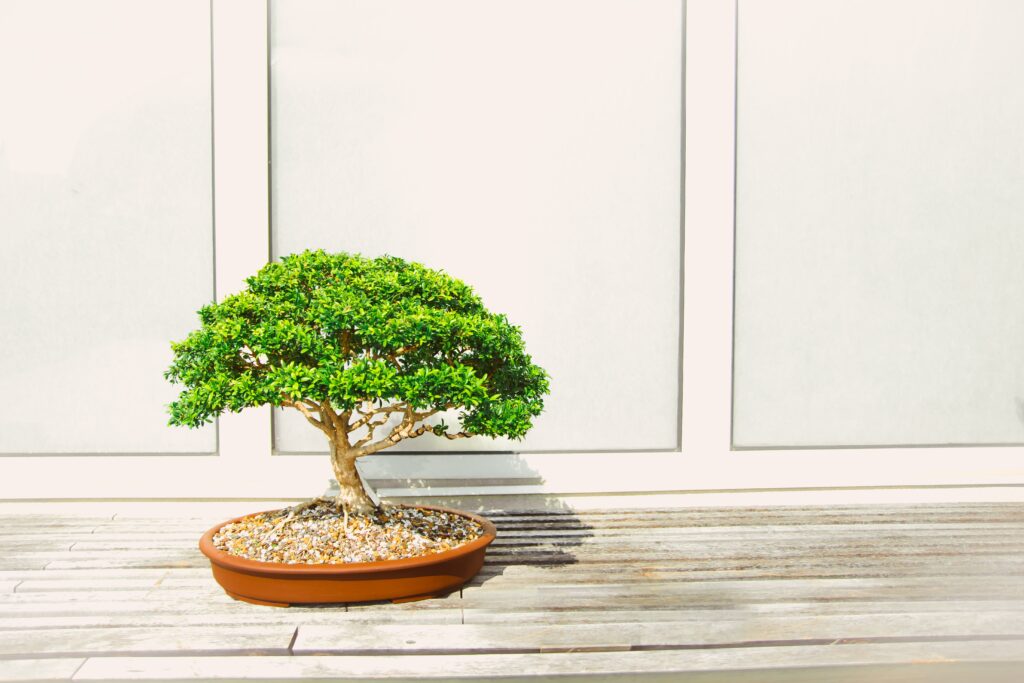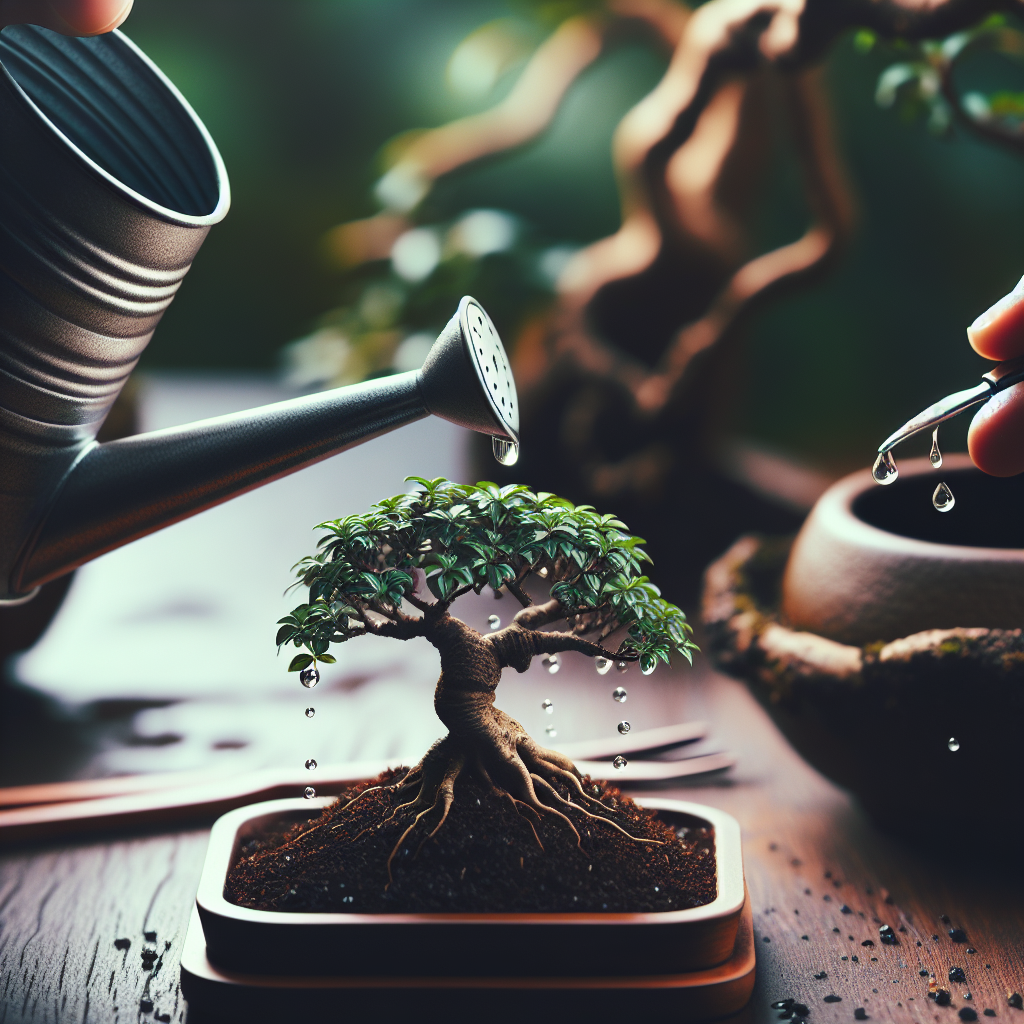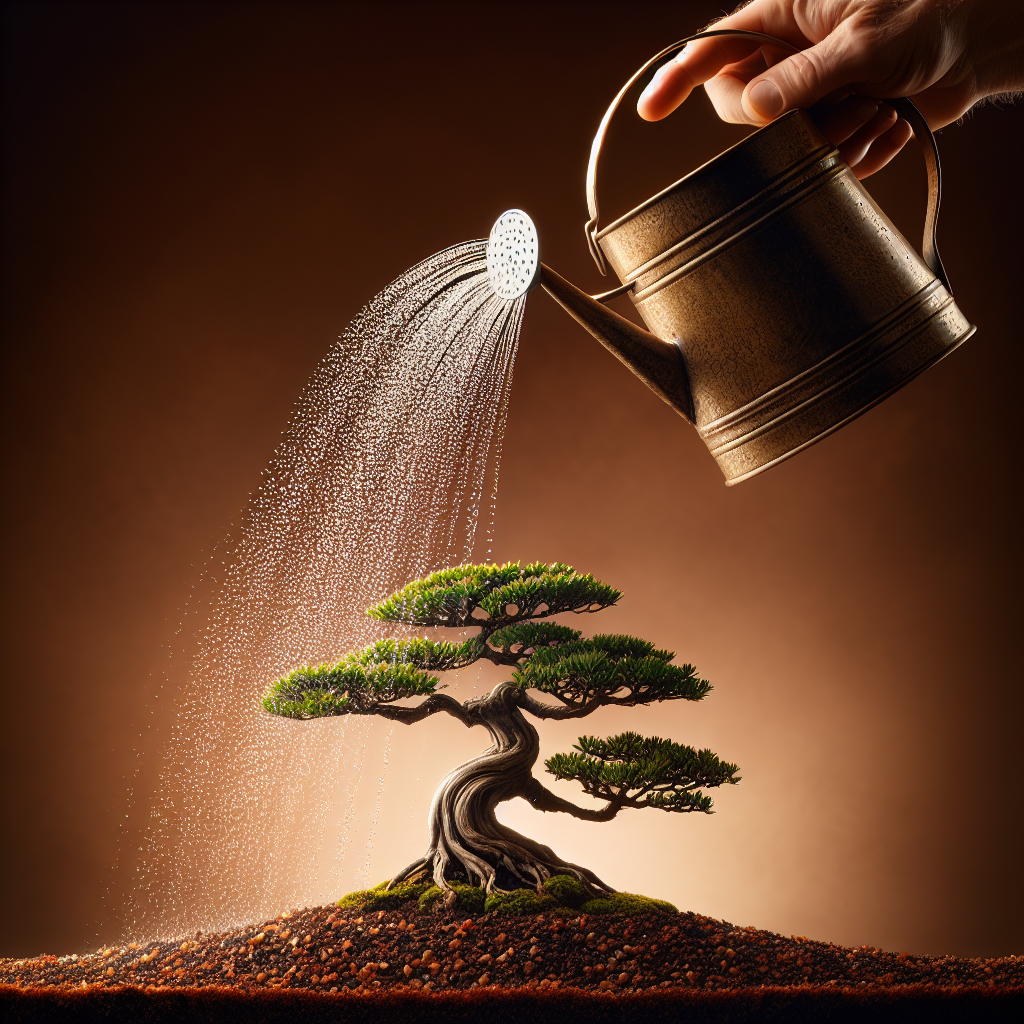
When it comes to caring for your bonsai tree, one important question that often arises is how often do you need to water it? With its delicate nature and unique requirements, finding the perfect watering schedule for your bonsai tree is crucial. In this article, we will explore the different factors that influence the watering needs of a bonsai tree and provide you with expert insights on how frequently you should water your precious miniature masterpiece. Whether you are an experienced bonsai enthusiast or just starting your bonsai journey, understanding the watering needs of your bonsai tree is essential for its health and vitality.

Factors to Consider
When it comes to watering your bonsai tree, there are several factors that you need to take into consideration. These factors will help you determine the right watering frequency and techniques to ensure the health and vitality of your bonsai tree. The three main factors to consider are the type of bonsai tree, the time of year, and the size of the bonsai tree.
Type of Bonsai Tree
The type of bonsai tree you have plays a significant role in determining its watering needs. Different species of bonsai trees have varying water requirements based on their natural habitat and characteristics. For example, tropical bonsai trees generally require more frequent watering due to their preference for moist soil. On the other hand, deciduous bonsai trees may require less water during their dormant period. It is essential to research and understand the specific watering needs of your bonsai tree species to ensure it receives the right amount of water.
Time of Year
The time of year also affects the watering needs of your bonsai tree. During the warmer months, bonsai trees tend to require more frequent watering, as the heat can cause the soil to dry out faster. Conversely, during the cooler months, the water needs of your bonsai tree may decrease. It is crucial to adjust your watering frequency accordingly, taking into account the seasonal changes and the specific requirements of your bonsai tree species.
Size of Bonsai Tree
The size of your bonsai tree is another factor to consider when determining its watering needs. Generally, smaller bonsai trees will require less water compared to larger ones. The size of the pot relative to the tree’s root system also affects how quickly the soil dries out. Smaller pots may dry out more quickly, requiring more frequent watering. It is essential to monitor the moisture levels in the soil and adjust your watering frequency based on the size and potting conditions of your bonsai tree.
Determining Watering Frequency
Determining the right watering frequency for your bonsai tree can be a combination of observation and using various techniques to assess the soil’s moisture level. Here are three common methods to help you determine when to water your bonsai tree effectively.
The Finger Test
The finger test is a simple yet effective way to check the moisture level of the soil. Insert your finger about an inch deep into the soil, and if it feels damp, it indicates that there is enough moisture. If the soil feels dry, it is a sign that your bonsai tree requires watering. Monitoring the soil’s moisture using the finger test can help you understand how quickly your bonsai tree’s soil dries out and when it needs to be watered.
Observing the Soil
Another method to determine the watering needs of your bonsai tree is to observe the soil. As you water your bonsai tree, take note of how the water is absorbed and how quickly it drains from the pot. If the water quickly runs through the soil and drains out of the pot, it suggests that the soil is well-draining and your bonsai tree may need more frequent watering. In contrast, if the water takes a longer time to drain, it indicates that the soil retains moisture well, and you may need to water less frequently.
The Weight Test
The weight test involves picking up your bonsai tree pot and evaluating its weight. When the soil is adequately moist, the pot will feel heavier due to the water content. As the soil dries out, the pot will become lighter. By regularly lifting the pot and getting a sense of its weight, you can develop a feel for how much moisture is present in the soil and determine if your bonsai tree needs watering.
Watering Techniques
Once you have determined the right watering frequency for your bonsai tree, it is essential to use appropriate watering techniques to ensure proper hydration. Different techniques can be employed based on the size of your bonsai tree, the type of pot, and the specific watering requirements of your bonsai tree species. Here are three common watering techniques used for bonsai trees:
Top Watering
Top watering is the most common method used to water bonsai trees. It involves pouring water directly onto the soil surface, allowing it to absorb and reach the roots. This technique is suitable for most bonsai trees but may be less effective for trees with dense foliage or those planted in deeper pots. When top watering, ensure that the water is evenly distributed throughout the soil, avoiding excessive water pooling around the roots or running off the pot.
Bottom Watering
Bottom watering is an alternative technique that involves placing the bonsai tree pot in a shallow tray filled with water and allowing the water to be absorbed through the drainage holes at the bottom of the pot. This method allows the water to be gradually absorbed by the roots, preventing waterlogging and ensuring efficient hydration. Bottom watering is especially useful for bonsai trees with fine roots that may be sensitive to excess moisture.
Misting the Foliage
In addition to watering the soil, misting the foliage of your bonsai tree can help increase humidity levels, especially for indoor bonsai trees. Fine misting can mimic the natural moisture in the air and benefit bonsai trees that require higher humidity levels. However, it is essential to avoid misting excessively, as it can lead to fungal issues or waterlogged leaves. Misting can be used as a supplementary technique to increase humidity and should not replace regular watering of the soil.
Watering Tips
To ensure the health and well-being of your bonsai tree, here are some essential watering tips to keep in mind:
Use Room Temperature Water
When watering your bonsai tree, it is best to use room temperature water. Water that is too cold or too hot can shock the roots and potentially harm your bonsai tree. By using water at room temperature, you create a more favorable environment for the roots to absorb water and nutrients.
Avoid Overwatering
Overwatering is one of the most common mistakes when caring for bonsai trees. It can lead to root rot and other issues that can adversely affect the health of your bonsai tree. Always ensure that the soil has dried out partially before watering again. Remember, it is better to underwater than overwater, as most bonsai trees can tolerate short periods of dryness.
Avoid Underwatering
While overwatering is a common mistake, it is equally important to avoid underwatering your bonsai tree. Underwatering can lead to dehydration and cause the tree to wilt or die. Monitor the soil moisture regularly and water your bonsai tree when necessary, especially during hotter periods or when the soil feels dry to the touch.

Common Mistakes to Avoid
To ensure the successful care of your bonsai tree, it is vital to avoid common mistakes that can negatively impact its health. Here are three mistakes to avoid when it comes to watering your bonsai tree:
Ignoring Environmental Factors
One common mistake is ignoring the environmental factors that can affect your bonsai tree’s watering needs. Factors such as temperature, humidity, sunlight exposure, and wind can all impact how quickly the soil dries out and how often your bonsai tree needs to be watered. It is crucial to consider and adjust your watering practices based on these environmental factors to ensure optimal growing conditions for your bonsai tree.
Not Knowing the Specific Needs of Your Bonsai
Each bonsai tree species has its unique watering requirements. It is essential to research and understand the specific needs of your bonsai tree species to ensure you are providing the right amount of water. Some trees prefer more moisture, while others require drier conditions. By knowing your bonsai tree’s specific needs, you can avoid overwatering or underwatering and promote its overall health and growth.
Inconsistency in Watering
Consistency is key when it comes to watering your bonsai tree. Inconsistent watering practices can stress the tree’s root system and potentially lead to issues such as root rot or dehydration. It is important to establish a regular watering schedule based on the specific needs of your bonsai tree and stick to it. Consistency in watering will help maintain a balanced and healthy growing environment for your bonsai tree.
Watering Tools
Using the right watering tools can make a significant difference in how effectively you can water your bonsai tree. Here are three essential watering tools for bonsai tree care:
Watering Can
A watering can with a fine rose nozzle is a must-have tool for watering bonsai trees. The rose nozzle helps distribute the water evenly over the soil surface, preventing excessive water pressure that can dislodge the soil or damage delicate roots. Choose a watering can that is proportionate to the size of your bonsai tree and allows for controlled water flow.
Spray Bottle
A spray bottle is a useful tool, especially for misting the foliage of indoor bonsai trees. Choose a spray bottle with a fine misting spray head that can easily cover the entire foliage without excessively soaking the leaves. Mist the foliage sparingly and avoid misting in cold or humid conditions to prevent fungal growth.
Watering Wand
A watering wand is a long, narrow attachment that can be added to a watering can to extend your reach and make watering larger bonsai trees easier. The wand allows you to water the bonsai tree’s roots directly without disturbing the foliage. It is especially useful for bonsai trees planted in deeper pots or hard-to-reach areas.

Watering Considerations for Outdoor Bonsai
Outdoor bonsai trees have specific watering considerations due to the exposure to natural elements. Here are two key factors to consider when watering outdoor bonsai trees:
Rainfall
Outdoor bonsai trees benefit from natural rainfall, which helps replenish moisture levels in the soil. However, it is still important to monitor the soil moisture and adjust watering practices accordingly. During periods of heavy rainfall, you may need to scale back on watering, while during drier periods, you may need to supplement with additional watering.
Sun Exposure
The amount of sunlight an outdoor bonsai tree receives affects its water requirements. Bonsai trees exposed to intense sunlight may require more frequent watering as the heat can cause the soil to dry out more quickly. Pay attention to the sun exposure your outdoor bonsai tree receives and adjust your watering frequency accordingly.
Watering Considerations for Indoor Bonsai
Indoor bonsai trees have different watering considerations compared to their outdoor counterparts. Here are two important factors to consider when watering indoor bonsai trees:
Humidity
Indoor environments tend to have lower humidity levels, which can affect the moisture requirements of your bonsai tree. Monitor the humidity levels around your indoor bonsai tree and consider using a humidity tray or incorporating other humidity-enhancing techniques. Misting the foliage can also help increase humidity levels for your indoor bonsai tree.
Temperature
Indoor environments are typically temperature-controlled, and maintaining a consistent temperature is important for the health of your bonsai tree. Extreme temperature fluctuations can affect water absorption and potentially stress the plant. Ensure that your indoor bonsai tree is not exposed to drafts or extreme temperature changes that can impact its hydration needs.

Signs of Overwatering
Overwatering can have detrimental effects on the health of your bonsai tree. It is crucial to identify signs of overwatering and take appropriate action to prevent further damage. Here are three common signs of overwatering:
Yellowing Leaves
Yellowing leaves can be an indication of overwatering. When the roots are constantly submerged in excessive moisture, they can become waterlogged and suffocate. This lack of oxygen and nutrient uptake can cause the leaves to turn yellow and eventually lead to leaf drop.
Wilting or Drooping
Contrary to expectations, overwatered bonsai trees can exhibit wilting or drooping leaves. This is because the roots are unable to absorb water efficiently due to the excessive moisture. The plant may appear limp or floppy, even when the soil is wet.
Fungus or Mold Growth
Excessive moisture in the soil can create a breeding ground for fungi and molds. If you notice the presence of fungus or mold growth on the soil surface or on the bonsai tree’s trunk, it is a clear indication of overwatering. Addressing the overwatering issue promptly and improving drainage can help prevent further fungal growth.
Signs of Underwatering
Underwatering can also have adverse effects on the health of your bonsai tree. It is important to recognize the signs of underwatering to prevent dehydration and promote optimal growth. Here are three common signs of underwatering:
Dry and Crispy Leaves
When a bonsai tree is not receiving enough water, its leaves can become dry, brittle, and crispy. This is a defense mechanism of the tree, as it attempts to conserve water by reducing transpiration. If you notice the leaves of your bonsai tree are excessively dry and crumbly, it is an indication that the tree requires more regular watering.
Leaf Curling
In an effort to conserve moisture, an underwatered bonsai tree may exhibit leaf curling. The leaves will curl inward, reducing their surface area and minimizing water loss through transpiration. Leaf curling is a clear sign that your bonsai tree is not receiving adequate moisture and should be watered promptly.
Slow Growth
An underwatered bonsai tree may exhibit slow or stunted growth. Insufficient moisture can hinder the tree’s ability to absorb nutrients and carry out essential metabolic processes for growth. If you notice that your bonsai tree’s growth has significantly slowed down or it appears stagnant, increasing your watering frequency may be necessary.
In conclusion, watering your bonsai tree properly is essential for its health and longevity. By considering factors such as the type of bonsai tree, the time of year, and the size of the tree, you can determine the appropriate watering frequency. Using techniques like the finger test, observing the soil, and the weight test can further assist in determining when to water your bonsai tree. Employing watering tools such as a watering can, spray bottle, or watering wand can help you water your bonsai tree effectively. Additionally, understanding the specific watering needs of your bonsai tree species and avoiding common mistakes, such as overwatering or inconsistent watering, is crucial. Whether you have an outdoor or indoor bonsai tree, considering environmental factors and recognizing signs of overwatering or underwatering will ensure the health and well-being of your bonsai tree.
